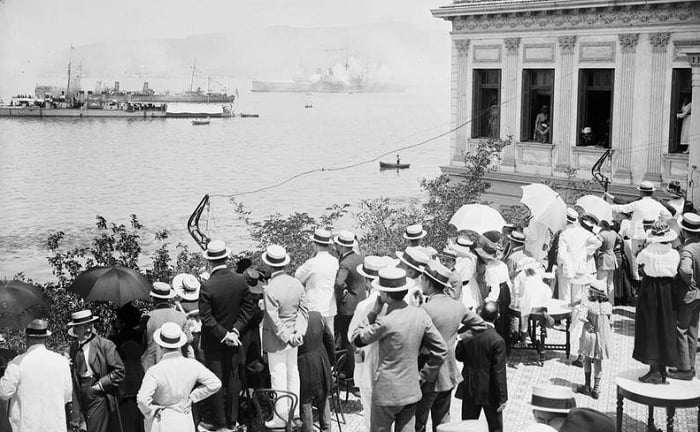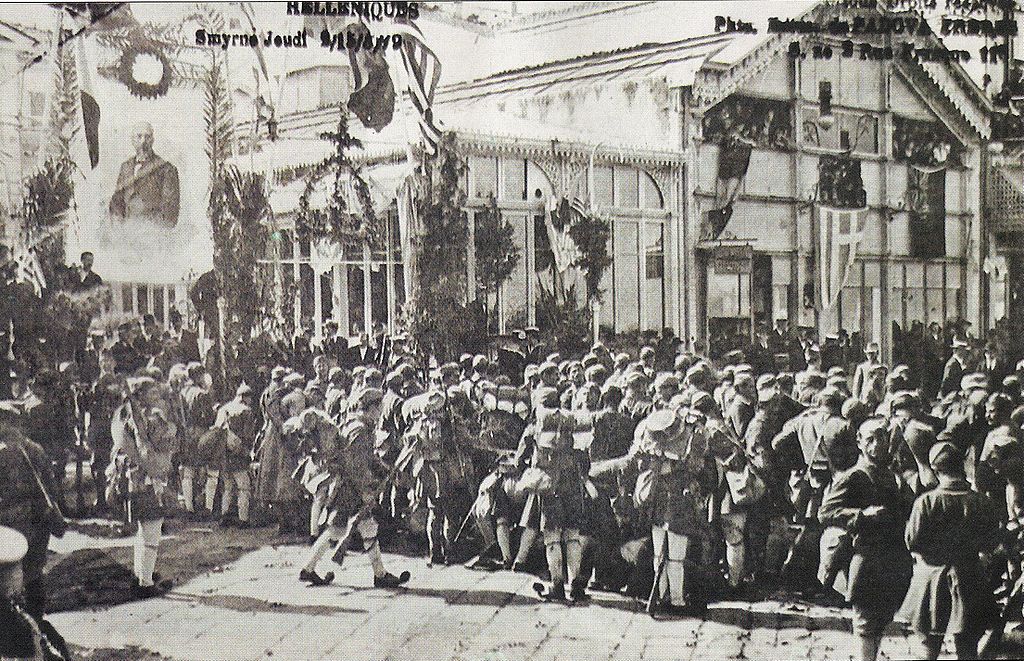
On May 14, 1919, thousands of Greeks of Smyrna wore their best clothes and rushed to the city’s seafront to get a glimpse of the Hellenic Navy. On that day, what had been for centuries the Greek metropolis in Asia Minor, was liberated.
Men and women holding their umbrellas climbed on chairs and tables to get a better view of the approaching fleet.
The Greek occupation of Smyrna, which was sanctioned by the Allied powers, started the following day, when thousands gathered on the seafront, waving Greek flags on the docks where the Greek troops were expected to arrive.
The Metropolitan of Smyrna, Chrysostomos, blessed the first troops as they arrived at 08:00 on May 15th.
Smyrna was once one of the most illustrious of all ancient and Hellenistic-era Greek cities. One of the main centers of Greek settlement in western Anatolia, it once had a temple dedicated to Athena and was the residence of the epic poet Homer.
Rebuilt during the Hellenistic era, it flourished for some time, becoming a hub of Armenian and Greek culture for many years even after the Turkish occupation of the area centuries later.
Greeks march into the city
The 1/38 Evzone Regiment marched by, passing a large part of the Greek crowds celebrating the landing and the Ottoman government Konak and barracks of Ottoman troops.

A Turk fired a shot and chaos resulted with the Greek troops firing multiple shots into the Konak and barracks. The Ottoman troops surrendered, and the Greek regiment began marching them up the coast to a ship to serve as a temporary prison.

Donald Whittall, a British citizen and one of the few neutral observers during the landing, remarked on the treatment of Turkish prisoners: “They were made to go through no humiliation and received a good deal.” But Whittall estimated that thirty unarmed prisoners were slaughtered.
Atrocities against local Turks did indeed occur, but the orders given to the landing troops were to refrain from such acts.

Commander of the 1st Infantry Division of the Hellenic Army, Colonel Nikolaos Zafeiriou, issued the following order to his soldiers, who learned about their destination only after the departure from the port of Kavala in northern Greece. Zafeirious said:
Wherever we may go, we must know that we are going to liberate our brethren under alien rule. The enthusiasm filling our hearts is fully justified but any improper manifestation of this enthusiasm will be entirely out of place. We must not forget that when we reach our destination we shall meet Turks, Jews and Europeans of other denominations. Everybody should be treated in the same way. In a little while they will become our brothers as if they were true Greeks.
Greeks established the Smyrna Zone until the 1922 catastrophe
The Greek landing created the Smyrna Zone that administered the area from 1919 until September 9, 1922.
France and Italy all became resistant to permanent Greek occupation, and the stillborn Treaty of Sèvres in 1920 gave administrative control of the area to Greece while Turkey would retain sovereignty with permanent sovereignty to be decided after five years.
The Greek occupation ended when Turkish forces entered Smyrna on September 9, 1922, resulting in the Asia Minor catastrophe.
The destruction of Smyrna, when Greeks were forced to flee the city due to a fire set by Turkish forces, still haunts Greece a century later.
See all the latest news from Greece and the world at Greekreporter.com. Contact our newsroom to report an update or send your story, photos and videos. Follow GR on Google News and subscribe here to our daily email!



